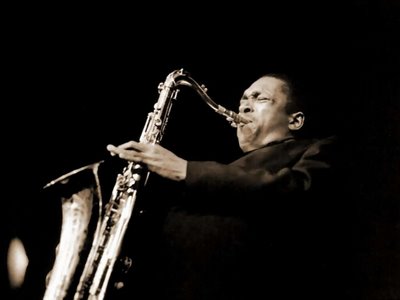 As a very grown-up 18 year old (or so I thought), I traveled to New York City alone for the first time during my senior year in high school. Some 40 years later, I vaguely recall getting off a Trailways bus at the Port Authority Terminal and walking out into the teaming throngs on 42nd Street. I lunched on a freshly sliced roast beef sandwich at an Irish pub near Madison Square Garden and washed it down with my inaugural English ale. I dropped some pocket change in the open guitar case of the first street musician I'd ever encountered. I took the subway uptown to Columbia University, where I (futilely) hoped to attend college, walked across the campus green to Low Memorial Library and later window shopped along Broadway.
As a very grown-up 18 year old (or so I thought), I traveled to New York City alone for the first time during my senior year in high school. Some 40 years later, I vaguely recall getting off a Trailways bus at the Port Authority Terminal and walking out into the teaming throngs on 42nd Street. I lunched on a freshly sliced roast beef sandwich at an Irish pub near Madison Square Garden and washed it down with my inaugural English ale. I dropped some pocket change in the open guitar case of the first street musician I'd ever encountered. I took the subway uptown to Columbia University, where I (futilely) hoped to attend college, walked across the campus green to Low Memorial Library and later window shopped along Broadway.But what I most clearly remember was gazing in the window of a hole-in-the-wall record store a few doors from the West End restaurant and seeing John Coltrane's "My Favorite Things" album staring back at me. I went inside and asked to see a copy.
This rookie didn't know Coltrane from Colbert (as in Claudette, not Steve), but I was taken by the image of an intense looking black man blowing a horn on the dust jacket. I figured that if the title track was a cover of the Rodgers and Hammerstein waltz from "The Sound of Music" and the flip side included George Gershwin's "Summertime," which I knew from "Porgy and Bess," then these were good enough reasons to pay four or five bucks (I don't remember exactly how much) to plunge into the great musical unknown.
Besides which, buying my first modern jazz album seemed like a very sophisticated thing to do for a young man on his own for the first time in the big city. I was cool.
I had listened to classical music that moved me in emotional and intellectual ways I hardly understood, stuff like Beethoven's "Pastoral" and Dvorak's "From the New World," both part of a boxed set purchased at an old A&P supermarket with money from my newspaper route.
While I had a budding affinity for jazz, it ran toward the Great American Songbook singers, notably Ella Fitzgerald, and bandleaders like Dave Brubeck and Benny Goodman. I enjoyed their music, but these comparatively square bears didn't move me. When I returned home from New York and put "My Favorite Things" on the turntable of my dinky blue-and-white portable RCA hi fi, I was moved.
I didn't know that Coltrane was playing in a style called "sheets of sound," let alone that he was grasping something called a soprano saxophone in his massive hands in the dust jacket photo, an all but obsolete instrument that he had taken up because it was less painful for his diseased gums to play than his old standby, the tenor sax.
All I knew was that I was moved.
This white boy from suburbia had arrived at a lush musical oasis amidst a mid-1960s landscape dominated by the Beatles, Motown and the last gasps of California surfer music. There would be no turning back.
He moved to
Coltrane’s first big break was with Dizzy Gillespie's big band in 1949, and after the band broke up he switched to tenor sax, which he played with bands led by Earl Bostic, Eddie “Cleanhead” Vincent and Johnny Hodges, among others.
The year 1960 marked the beginning of Coltrane’s most prolific period and the formation of his so-called Classic Quartet with pianist McCoy Tyner, bassist Steve Davis (later replaced by Jimmy Garrison) and drummer Elvin Jones. He recorded the seminal “Giant Steps,” the title track of which includes perhaps the most complex cord progressions he ever laid down, and then “My Favorite Things.”
Some people claim that Coltrane began using LSD about this time, and there is indeed an acid-like transcendence to his music he played, much of it with new wife Alice on piano and Pharoah Sanders on tenor sax.
Coltrane succumbed to liver cancer at age 40 in 1967.
I have seen McCoy Tyner and Elvin Jones, two of his three collaborators on "My Favorite Things," many times, and one of the highlights of the 35 or so years of live jazz that I've absorbed was hearing Tyner channel Coltrane in an all-Trane show which happened to fall on my birthday a few years back.
Then there's that ebony soprano sax in the dust jacket photo.
Although Coltrane is best remembered for his extraordinary tenor work, if you put an Indonesian gamelan to my head and threatened to beat it until you broke my eardrums if I didn't name my favorite artist and instrument, I would shout "Uncle! John Coltrane! Uncle! Soprano sax!"
And my favorite album?
"My Favorite Things."
Of course.
What an awesome, well done tribute! Thank you so much for sharing it. I am going to link it at two sites I hang at- Peace Train-Forums and also at Gynocracy Invasion
ReplyDeleteI have many thoughts associated with "Love Supreme"- and have many cd's. But I admit that I dont have as much knowledge about them as I would like.